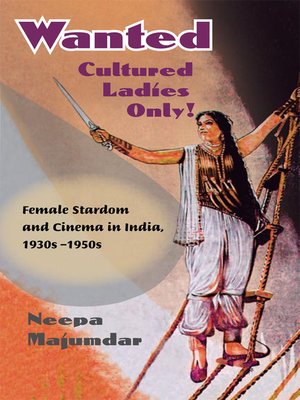Wanted Cultured Ladies Only!
ebook ∣ Female Stardom and Cinema in India, 1930s-1950s
By Neepa Majumdar

Sign up to save your library
With an OverDrive account, you can save your favorite libraries for at-a-glance information about availability. Find out more about OverDrive accounts.
Find this title in Libby, the library reading app by OverDrive.



Search for a digital library with this title
Title found at these libraries:
| Library Name | Distance |
|---|---|
| Loading... |
Wanted Cultured Ladies Only! maps out the early culture of cinema stardom in India from its emergence in the silent era to the decade after Indian independence in the mid-twentieth century. Neepa Majumdar combines readings of specific films and stars with an analysis of the historical and cultural configurations that gave rise to distinctly Indian notions of celebrity. She argues that discussions of early cinematic stardom in India must be placed in the context of the general legitimizing discourse of colonial "improvement" that marked other civic and cultural spheres as well, and that "vernacular modernist" anxieties over the New Woman had limited resonance here. Rather, it was through emphatically nationalist discourses that Indian cinema found its model for modern female identities. Considering questions of spectatorship, gossip, popularity, and the dominance of a star-based production system, Majumdar details the rise of film stars such as Sulochana, Fearless Nadia, Lata Mangeshkar, and Nargis.|
Table of Contents
Acknowledgements................................................i
Introduction Translocating Hollywood Stardom in India........................1
Part I: ?India Has No Stars?
Chapter One The Split Discourse of Indian Stardom..........................34
Chapter Two
The Morality and Machinery of Stardom.........................110
Chapter Three Real and Imagined Stars.......................................155
Chapter Four
Spectatorial Desires and the Hierarchies of Stardom...........199
Part II. ?This Stardom Racket?
Chapter Five Monopoly, Frontality, and Doubling in Post?War Bombay Cinema.....................................261
Chapter Six Nargis and the Double Space of Female Desire in Anhonee (1951)............................323
Chapter Seven The Embodied Voice: Song Sequences and Stardom in Bombay Cinema...................369
Works Cited...................................................427
|
Received an Honorable Mention for the Society for Cinema and Media Studies (SCMS) Best First Book Award, 2011.
— Society for Cinema and Media Studies
|Neepa Majumdar is an associate professor of English and film at the University of Pittsburgh.
|Neepa Majumdar is an associate professor of English and film at the University of Pittsburgh.







